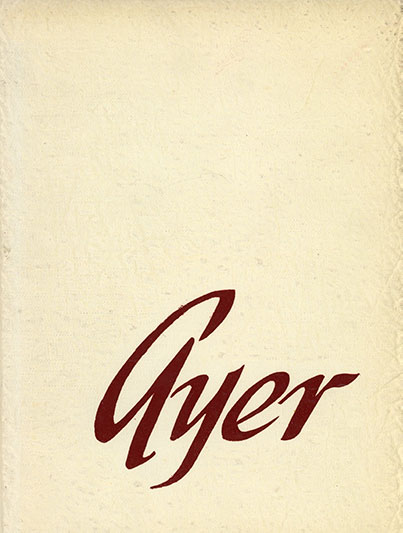EXHIBIT PREVIEW
The Early Years of CMC
1947-1957

Once established, the new men’s college had to find its footing, securing the stability that would enable it to pursue a path to excellence. The road would be long – but the men’s school would find invaluable allies and advocates along the way.
These early years in the life of the school were formative ones, helping to forge the character and community that would come to define Claremont McKenna College. Below, a look at the markers and milestones reached at the beginning of our remarkable journey.
The CMC Digital Archives
Join with Claremont McKenna College as we celebrate our vibrant 75-year history. Reflecting back on the College’s modest origins will lead to perspectives on the College’s current success and will inform the College’s aspirations for the future.
The 2021-22 academic year will be spent commemorating the milestones of the last 75 years in monthly exhibitions that will focus on faculty, students, campus buildings, presidents, coeducation, research institutes, the role of veterans, and others.

Open for Business
By 1946, the men’s college is open and operational, but there is an air of uncertainty to the whole enterprise. An endowment of $1 million is needed for incorporation of a school with 150 students. Toward the end of the year, just $116,000 in gifts and pledges have been received – and then Marie Rankin Clarke donates $500,000 in honor of her late husband, pioneer miner and oil man Chauncey Clarke. The contribution gives the men’s college vital momentum for moving ahead, and in December, the Claremont Colleges’ Board of Fellows considers incorporating the men’s school as a separate college.
Claremont Men’s College is certified as a nonprofit corporation in California on March 28, 1947, and the Board of Fellows approves the articles of incorporation. Additional gifts take the endowment above $1 million.
March 1947
Russell Pitzer offers $250,000 toward an academic building for the college on the condition that the school’s advisory council matches the donation. As the $1 million mark comes into sight, the advisory council initiates steps to acquire land and to begin construction of a classroom for the newly named Claremont Men’s College between Amherst and Columbia Avenues and Eighth and Ninth Streets.

May 1947
Claremont Men’s College holds its first convocation at Bridges Auditorium.

Fall 1947
The school organizes an annual yearbook, The Ayer, and the Parents’ Committee comes together, helping to raise $10,000 for an athletics field (Parents’ Field), as well as funds for Pitzer Hall. The committee is later absorbed into a larger group, the CMC Affiliates.
The School Takes Shape
By 1948, student life at Claremont Men’s College starts to flourish. The Student Council allocates $500 toward the opening of a social center, soda fountain and bookstore called the Hub, located in the wing of a former Army mess hall south of Story House. Campus organizers form the Claremont Men’s College Alumni Association.

February 1948
Peter Man Foo U, a transfer student from the University of Hong Kong, becomes the first graduate to earn his degree from Claremont Men’s College.


June 1948
On the same day, CMC holds its first commencement and dedicates its first dormitory, Appleby Hall.

Expanding the Vision
As enrollment grows, the need for more housing becomes apparent. In 1950, a four dormitory quadrangle (Appleby, Green, Boswell and Wohlford Halls), with accommodations for 250 students, is completed. The construction of Wohlford Hall necessitates the tearing down of the temporary units along Sixth Street, marking a shift toward the end of the pioneer era.
May 1950
Pitzer Hall, Claremont Men’s College’s first permanent classroom and administrative building, is dedicated.

June 1950
CMC’s first four-year class graduates.

1954
Student radio station KCMC begins broadcasting recorded music and interviews from 7:00 am to 12:00 am.

1955
The school launches the 10th Anniversary Building Program, which will see nine major construction or improvement projects completed over the next five years. The opening of the Baxter Science Center – which is completed in time for the fall term – marked the inauguration of the program.
1957
Collins Dining Hall opens for student use and a new student bookstore is constructed between McKenna Auditorium and Wohlford Hall. Costing $30,000, the bookstore is to be operated by the Associated Students.
